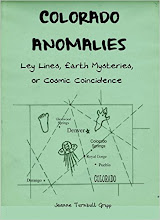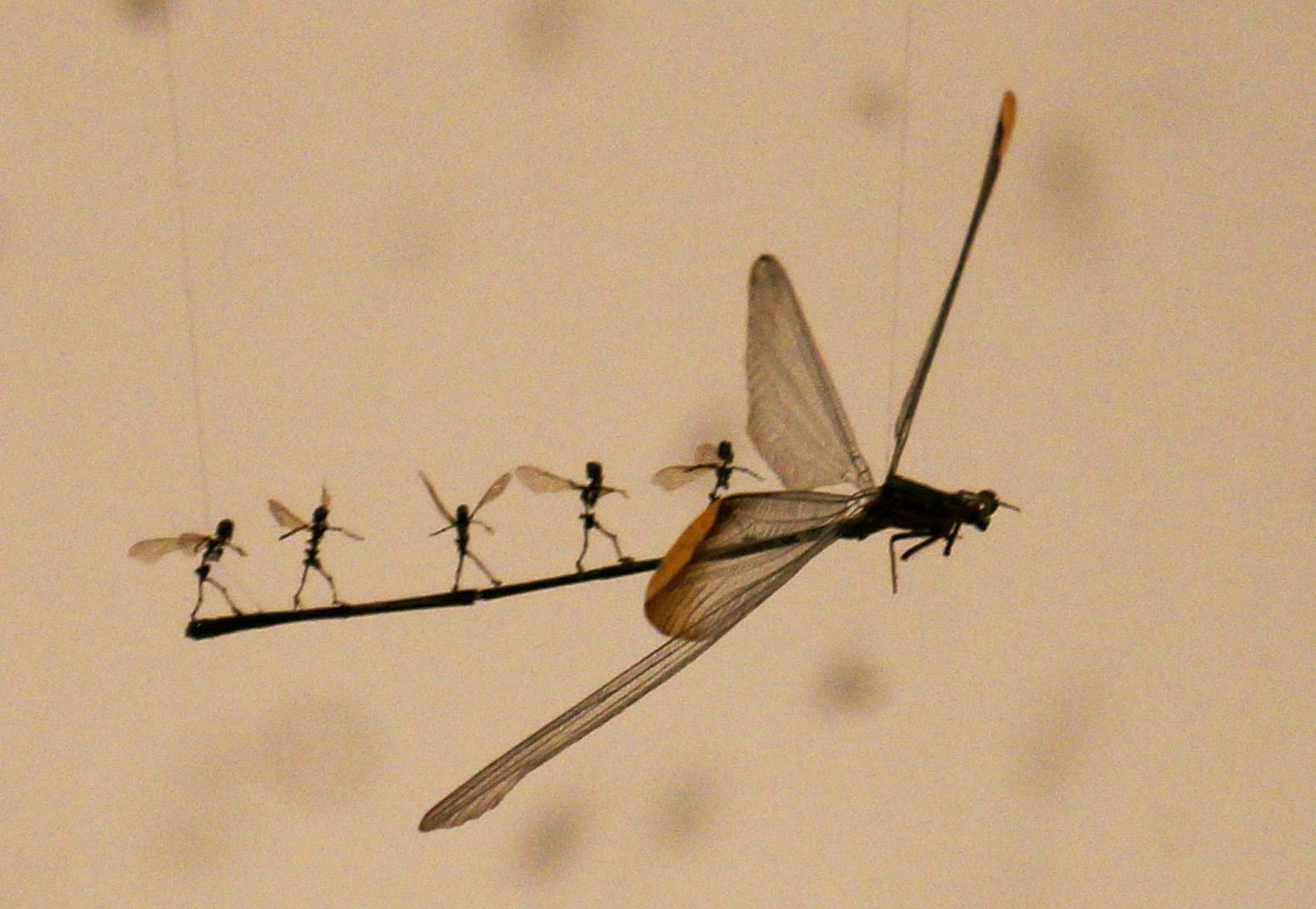Sunday, June 29, 2014
Friday, June 27, 2014
Roadtrip ~ A Rock Star
The Pikes Peak Historical Society has a free monthly program called a Chautauqua. Hubby and I try to attend as many as possible, no matter the weather. The guest speaker of a recent one was Richard Fretterd from the tv show, Prospectors, which airs on The Weather Channel.
Rich lives in the area and has generously donated many mineral samples to the PPHS Museum. He has been prospecting for many, many years and has a whole treasure trove of interesting tales to tell.
 |
| A smaller smoky quartz crystal donated by Rich Fretterd |
At a recent Chautauqua, he spoke of what it was like making the show, Prospectors. As well as finding the pocket of elusive pink topaz which he had spent years looking for. Rich brought a nice sampling of topaz specimens and several smoky quartz crystals with him to the afternoon talk.
Afterwards we all relocated to the PPHS Museum for the dedication of the two enormous smoky quartz crystals which Rich had donated to the museum. The two crystals are nicknamed The Brothers - after Rich and his brother, Vincent "Scruffy".
The two Smoky Quartz Crystals were found a few miles north of the town of Florissant and are some of the largest smoky quartz crystals in North America. The Brothers were found in the Holy Moses Pocket of the Godsend Claim.
A person can only wonder what other treasures are waiting to be found ....
 |
| This photo is referencing the smoky quartz crystal on the left side of the photo above. |
A person can only wonder what other treasures are waiting to be found ....
Thursday, June 26, 2014
Pikes Peak Historical Society
Hubby and I are both history buffs and Colorado has a wealth of history to be uncovered. So we joined the Pikes Peak Historical Society. In fact I recently took over as editor for their newsletter. This organization is impressive. It is run solely off of membership fees and donations. It receives no government money. And the organization manages to maintain two fairly impressive museums.
The main PPHS museum is filled with a wide range of the history of the Pikes Peak region - specifically the western slope of Pikes Peak. From the Railroads which brought many of the early visitors to the area to the Native Tribes who traversed this country, the museum is filled with pictures, stories and displays. And the museum has wonderful volunteers who are in attendance to assist and answer questions.
Tuesday, June 24, 2014
Sunday, June 22, 2014
The Music of Trees
This artist has crafted a unique record player that 'plays' slice of trees - making music from the rings of the tree.
Thursday, June 19, 2014
Trees ~ An Eclectic Mix
Sunday, June 15, 2014
Friday, June 13, 2014
Road Trip - Shrine of the Sun
On a whim, Hubby and I decided to go for a drive one sunny Sunday afternoon. We wondered our destination, when we saw it! We knew where we were headed - The Will Rogers Shrine of the Sun!
 |
| aerial view of the Will Rogers Shrine of the Sun courtesy of Cheyenne Mountain Zoo website |
The Shrine of the Sun is located high up on the side of Cheyenne Mountain outside of Colorado Springs, with an expansive view.
This medieval looking tower (the grands call it The Castle) was built by Spencer Penrose, a philanthropist who made his money in the gold fields of Cripple Creek and copper ore from Utah. Spencer Penrose and his wife, Julie, helped to make Colorado Springs what it is today.
The Shrine was completed in 1937 after 3yrs of construction. No wood or nails were used in the construction but 200,000 lbs of steel and 30 wagon loads of cement were. And all the stones used came from a single boulder of Pikes Peak Granite. Penrose named the tower after Will Rogers, a very good friend of his, after Rogers was killed in a plane crash in 1935.
The first floor is a wondrous room with a cathedral ceiling. The entire room is painted in a mural depicting the early history of the region and is aptly named the "Historical Room". And the sound in this room is incredible! The resonance of any note can be felt in one's soul. I would love to hear music in this room.
The floors above the "Historical Room" are filled with a photographic tribute to Will Rogers. The Shrine rises 114 ft above the mountain. The climb up the narrow stairway to the top is not for the squeamish. Nor is standing on the upper balcony. Whew! Talk about vertigo.....
Around the base of the tower is a walkway with large granite stones serving as a guard rail. Atop these stones are plaques which point to various landmarks.
The lower level contains the chapel where the remains of Spencer and Julie Penrose reside. The chapel has several 15th and 16th century art objects in it.
There is an eclectic collection of statuary on the grounds. Proof that the Penroses strove to bring culture to the Pikes Peak region. Another balcony is situated off of the chapel entrance.
And if y'all are wondering, No! neither Hubby nor I were up to the challenge of venturing too far up or out. In fact driving up the road to the Shrine was almost too much for your intrepid reporter.
And speaking of the road, it now bears the name Russell Tutt Scenic Highway. But it was once known as the Wonder Road. Probably because it was a wonder it was built, the way it perches on the side of the mountain!
The piece de resistance is the Westminster chimes located in the tower. They can be heard throughout the valley below, chiming the hour and quarter hour. In a newspaper article from 1937, lights were said to have come on and gone off before/after the chimes rang out. The Shrine was fondly called the Singing Tower.
In the Visitors center is a scale model of The Shrine along with bits of memorabilia and history. If anyone is ever in this area, be sure to put this on your 'must see' list! I highly recommend it!
This medieval looking tower (the grands call it The Castle) was built by Spencer Penrose, a philanthropist who made his money in the gold fields of Cripple Creek and copper ore from Utah. Spencer Penrose and his wife, Julie, helped to make Colorado Springs what it is today.
The Shrine was completed in 1937 after 3yrs of construction. No wood or nails were used in the construction but 200,000 lbs of steel and 30 wagon loads of cement were. And all the stones used came from a single boulder of Pikes Peak Granite. Penrose named the tower after Will Rogers, a very good friend of his, after Rogers was killed in a plane crash in 1935.
 |
| looking up at cathedral ceiling in Historical Room |
 |
| All the doors are made of ornate steel |
The floors above the "Historical Room" are filled with a photographic tribute to Will Rogers. The Shrine rises 114 ft above the mountain. The climb up the narrow stairway to the top is not for the squeamish. Nor is standing on the upper balcony. Whew! Talk about vertigo.....
 |
| looking northeast at Colorado Springs |
The lower level contains the chapel where the remains of Spencer and Julie Penrose reside. The chapel has several 15th and 16th century art objects in it.
There is an eclectic collection of statuary on the grounds. Proof that the Penroses strove to bring culture to the Pikes Peak region. Another balcony is situated off of the chapel entrance.
 |
| looking north towards the Garden of the Gods |
And speaking of the road, it now bears the name Russell Tutt Scenic Highway. But it was once known as the Wonder Road. Probably because it was a wonder it was built, the way it perches on the side of the mountain!
The piece de resistance is the Westminster chimes located in the tower. They can be heard throughout the valley below, chiming the hour and quarter hour. In a newspaper article from 1937, lights were said to have come on and gone off before/after the chimes rang out. The Shrine was fondly called the Singing Tower.
In the Visitors center is a scale model of The Shrine along with bits of memorabilia and history. If anyone is ever in this area, be sure to put this on your 'must see' list! I highly recommend it!
Labels:
colorado,
roadtrip,
rocky mountains,
Shrine of the Sun
Subscribe to:
Posts (Atom)

































































